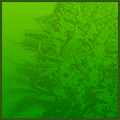|
We Update Daily!
 Custom Search Custom Search
Chris S. Kenoyer. Owner
MMJ Patient, Medical Activist,
Online Patients Advocate,
Online MMJ News Journalist
My Medical Bio
Follow Us Now On Twitter
@MedicalMMJMan
Or Follow Us Now
On Facebook
Email Us Here
olpwebs@yahoo.com
Or Email Us Securely Here
MedicalMMJMan@countermail.com
NEW 100% Encrypted Email Server
OLP’s Free MMJ News EList
Get The Latest In MMJ News
Press Contact Info
Is CBD? A Possible Cure For
Breast Cancer..? And All The Other
Many Forms & Types Of Cancer..?
Learn More About CBD Here
***************************
Advertise Here On OnlinePot
Rates As Low As $50 a Year
24/7 – 365 Days A Year Of Sales!
***********************************
Website Navigational Links
Main Start Page 2
**************************
Latest Marijuana News Reports
*********************************
Parody’s Cartoons US
Government Grown Pot,
Term Papers, School
Reports, & Thesis’s On
Marijuana & Cannabis
*********************************
Amsterdam A to Z
********************************
Canadian Marijuana Websites
*******************************
Church’s & Pot Cannabis
*****************************
Co-Ops, Clinics, Dispensary’s
*****************************
Marijuana Doctors & Clinics
****************************
Pot Cooking Recipes
****************************
Drug Testing A To Z
***************************
Pot Games
****************************
Pot Songs Video’s
****************************
100’s Of Grow Guides
***************************
Hash A- Z
***************************
Cannabis Legal Info, Drug
Lawyers, State, Federal Laws,
State & Supreme Court Rulings
**********************
POW’s Of The MMJ War!
*****************************
Other Marijuana Websites
Reciprocal Link Exchange
****************************
Medical Marijuana Studies,
Research Report’s, Medical
Cannabis Clinic Study’s
****************************
Parody’s & Cartoons
When We All Need A Good Laugh!
****************************
Avoiding Online MOM Scammers
Newly Re-Updated Info!
*****************************
The Politics Of Contraband
Medical Marijuana In The Mail?
******************************
The Hall Of Shame Section
The Online MOM Scammers
*****************************
Online MOM Providers Ads
****************************
Politicians & Voters Rights
****************************
Medical Marijuana, Strains
****************************
The OG Marijuana Strain Guide
****************************
800+ FAQ Growing Questions
****************************
Patients Spiritual Guidance,
Free Online Crisis Help Center
****************************
Online Marijuana Seed Banks
****************************
Maximum Security Section
Just Updated!
*****************************
Traveling Tips, Guides, B & B’s
****************************
Vaporizers A To Z
*****************************
Online Pot Video’s & Movies
**********************************************
Please Visit Both Of Our Sister Websites!
Maine Patients Coalition.org
The Reefer Madness Teaching Museum.org
Listen Right Here Online!
To Original 1930-1950’s
Reefer Madness Propaganda
Radio Shows And Programs
Before TV There Were
"Radio Stars"
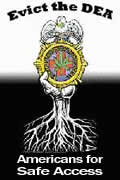
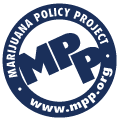

*********************************
Legal Disclaimer
Guest Book
Translate Text or Web Page Go To:
Language Tools Google Translations
Article Submissions & News
Reports Are Always Gladly
Accepted Here.

No part of this site maybe used or
reproduced in whole or in part
without the written consent of the
Copyright Owner
www.onlinepot.org
OLP ENTERPRISES L3C
1999-2014 Copyright
© All rights reserved
OnlinePot assumes no legal liability for any products, or information or
news posted, services offered, Or
any contests or give away’s offered.
|
|
Netherlands Alcohol and Drugs Report
Everything You Need To Know About Amsterdam,
Main Entrance Page For Amsterdam A to Z
- Dutch Drug Policy and Cannabis
- International Treaties
- The Opium Act
- Expediency Principle
- Cannabis confiscations
- Coffee Shops
- Stepping-Stone Hypothesis
- Guidelines
- Data on cannabis use
- Risks of cannabis use
- Nederweed
- Prevention and education
- Criticism and Praise
- Colofon

Dutch Drug policy and Cannabis
The main aim of the drugs policy is to reduce the risks of drug use to the individual drug users, their immediate environment, as well as society in general. The reduction of supply and demand is also an important objective. With respect to the individual, the protection of their health is the key aim. In this context, prevention and care are core policy issues. With respect to the protection of society as a whole, measures in the field of public order and safety are important issues.
Responsibility for the Drugs Policy rests with both the Minister of Health, Welfare and Sports (VWS) and the Minister of Justice. The Minister of HWS bears the prime responsibility for policy on prevention and care, with the exception of administrative prevention. This is the task of the Ministry of the Interior. The Minister of Justice is responsible for the enforcement of the Opium Act. The Minister of HWS is responsible for the coordination of the government’s drug policy.
The Opium Act is the main law in which regulations on drugs are laid down. Various other types of legislation may also be applied in investigation and prosecution. One example is the ‘pluk-ze’ (clean them out) legislation (law on financial penalties) which makes it possible to tackle money-laundering. The Public Prosecutors office has also issued directives for circumstances in which more severe sentences are to be used, such as selling to vulnerable groups (school children, psychiatric patients) and trade in the vicinity of schools and psychiatric hospitals. But the government policy is also based on the premise that criminal prosecution must be no more damaging to the drug users than the drug use itself.
Dutch drug policy is aimed at maintaining a separation between the market for soft drugs (cannabis products such as hashish and marijuana) and the market for drugs that carry an unacceptable risk (such as the hard drugs heroin and cocaine). Furthermore, the policy is also aimed at preventing drug users from ending up in an illegal environment, where they are difficult to reach for prevention and intervention.

International Treaties
The main international drugs treaty ratified by the Netherlands is the United Nations Single Convention on Narcotic Drugs of 1961 (amended in 1972). The primary aim is to achieve worldwide cooperation in the fight against drug abuse and drug trade other than for medical and scientific purposes. In 1993. the Netherlands also ratified the 1971 UN Convention on Psychotropic Substances (pertaining to illegal drugs, as well as tranquillizers and barbiturates) and the 1988 UN Convention on Illicit Traffic in Narcotic Drugs and Psychotropic substances.
The Schengen Treaty of 1985 is an agreement between all EU member states, with the exception of Denmark, the UK and Ireland, aimed at the opening of their borders. The Treaty includes agreements on better cooperation in the fight against crime and the harmonization of drug legislation. The implementation treaty of the Schengen Treaty dates from 26 March 1995.

The Opium Act
The Opium Act of 1919 (amended in 1928 and 1976) regulates the production, distribution and consumption of "psychoactive" substances. Possession, commercial distribution, production, import and export and advertising the sale or distribution of all drugs is punishable by law. Since 1985, this has also covered activities preparatory to trafficking in hard drugs. The use of drugs is not punishable by law. Activities relating to soft drugs and hard drugs for medicinal and scientific purposes are allowed provided the Minister of VWS has granted special permission.
Since 1976, a distinction has been made between soft drugs and hard drugs. This distinction was established as a result of a 1972 report from the Working Group on Narcotic Drugs (the Baan Committee). Using a ‘risk scale’, based on medical, pharmacological, socio-scientific and psychological data, a distinction was made between drugs which pose an unacceptable hazard to health (‘hard drugs’, such as heroin, cocaine, LSD and amphetamines) and hemp products (‘soft drugs’ such as hashish and marijuana). Hard drugs were listed on schedule I and soft drugs were listed on schedule II (sub b) of the Opium Act. Since 2 July 1993, barbiturates and tranquillizers have been listed on schedule II (sub a) due to the fact that the Netherlands ratified the Psychotropic Substances Treaty.
Violations of the Opium Act are punished severely, but penal provisions for soft drug offences are milder than those for hard drugs. A distinction is also made between the possession of drugs and trade in drugs. This makes the possession of soft drugs and hard drugs for commercial purposes subject to harsher sentences than possession for individual consumption. The import and export of drugs has the highest priority in terms of investigation and prosecution and is subject to the stiffest sentences.
The following illustrates the penal differentiation: the maximum sentence for the sale or production of a maximum of 30 grammes of hemp is one month detention (and/or a Dfl 5000 fine), while import or export is punishable with one year detention (and/or a Dfl 100,000 fine). The maximum penalty for the possession of hard drugs in ‘consumer amounts’ is one year imprisonment (and/or a Dfl 10,000 fine) and 12 years imprisonment (and/or a Dfl 100,000 fine) for the import or export of hard drugs. The maximum penalties may be increased by one third if the offence has been committed more than once.
Guidelines have been established for the investigation and prosecution of Opium Act offences (see Expediency Principle )

Expediency principle
The principle of expediency has been included in the Dutch Penal Code. This empowers the Public Prosecutor to refrain from prosecution of criminal offences if this is in the public interest. The guidelines for investigation and prosecution were amended on 1 October 1996. These guidelines establish the priorities in the investigation and prosecution of Opium Act offences. Punishable offences involving hard drugs other than for individual use take the highest priority, followed by punishable offenses invol ving soft drugs other than for individual use. Investigation and prosecution of possession of hard drugs for individual consumption (generally 0.5 gramme) and soft drugs to a maximum of 5 grammes carry the lowest priority. If coffee shops comply with the guidelines (see Guidelines ), the sale of a maximum of 5 grammes of hashish and marijuana per transaction is generally not investigated. The police do confiscate all drugs discovered. Coffee shops involved in the sale of trade or consumption stocks for export are subject to priority investigation and prosecution. The same applies to soft drugs sales via other points of sale, such as cafes, shops, take-away centers, couriers or taxis, commercial telephone lines, mail order, etc.

Cannabis confiscations
The police and the public prosecutor closely cooperate in the investigation and combat of the drug trade. International cooperation is considered of primary importance. Confiscated imported hashish (see table) was often transported via containers (from Pakistan and elsewhere) or by road (from Morocco). Destinations included the USA, Great Britain and Sweden. Marijuana mainly came from Colombia, Jamaica, Central Africa and South East Asia.
confiscated hasj, marijuana (kg) and Nederweed (plants)
| Table 1 |
1993 |
1994 |
1995 |
| hasj |
28.173 |
43.297 |
57.051 |
| marijuana |
110.049 |
194.961 |
275.035 |
| Nederweet |
194.413 |
558.706 |
549.337 |
reference: Dutch Criminal Investigation Information Service
In recent years the Dutch cannabis market has increasingly been supplied (around 50%) via the production of indigenous marijuana (Nederweed). Hemp cultivation is only permitted for agricultural and horticultural activities and for wind barriers. In the future it is possible that more measures will be developed to deal with the illegal indoor cultivation of hemp and the cultivation of illegal crops.

Coffee Shops
Over the years so-called coffee shops emerged. The sale of hard drugs at these premises is strictly forbidden, but the sale of soft drugs is not prosecuted provided certain conditions are met (see Guidelines ). The reasons for this policy are the desire to separate the markets for hard drugs and soft drugs, to avoid criminalisation and administrative clarity. The government wants to prevent (often young) soft drug users to resort to a market where there are more drugs for them to switch to (see Stepping-Stone Hypothesis ) and where they might more easily end up in criminal circles.
According to police estimates the number of coffee shops in the Netherlands was 1200 to 1500 in 1991. A research bureau estimated their number at 1460 in 1995 and 1293 in 1996, but there are both lower and higher estimates, all of which are as well founded as each other. The coffee shops are mainly small, café-like enterprises catering for a diverse public from various social backgrounds. Most offer a wide range of hashish and marijuana products from various countries and of varying quality. They have various functions. Some act solely as shops, in others people may use drugs if they buy something, while others serve mainly as meeting places where little is bought and people stay longer. These latter type may have a nuisance-reducing effect, as there is less lingering in the streets.
The majority of coffee shops adhere to national AHOJ-G criteria (see Guidelines ). The closing down of a number of coffee shops and a more rigid police control in recent years have shown that these criteria are strictly adhered to. Immediate causes for police operations are usually related to nuisance problems in the neighborhoods or suspected hard drugs traffic. Other specific problems are coffee shops in undesirable locations (such as in residential areas or near schools), and the attraction of drug tourists, especially in the border towns.
Since 1995, the policy has been aimed at reducing the number of coffee shops, also in the context of the nuisance policy (see fact sheet Drugs Nuisance Policy). Administrative measures are also being introduced more often at local level to prevent and fight nuisance problems in the vicinity of coffee shops. General bye-laws, nuisance regu lations, environmental regulations, zoning-plans and building regulations offer possibilities in this respect. Since these often result in complicated procedures which are by no means always successful, a new law is being drafted. Dubbed ‘Damocles’, this draft law on the executive enforcement of the Opium Act allows mayors to close coffee shops and trade locations even if there are no nuisance problems, but if, for instance, both hard drugs and soft drugs are being sold. The separation of the markets for soft drugs and hard drugs continues to be a key criterion in use of closure authority. This law is expected to come into effect on 1 January 1998.

Stepping-stone hypothesis
The assumption that cannabis consumers run a higher risk of switching to hard drugs, especially heroin, is known as ‘the stepping-stone hypothesis’. This idea was first put forward in the forties in the USA and has since greatly influenced public opinion, as well as American and international drug policies. Opinions differ as to whether or not the hypothesis is correct. As for a possible switch from cannabis to hard drugs, it is clear that the pharmacological properties of cannabis are irrelevant in this respect. There is no physically determined tendency towards switching from soft to harder substances. Social factors, however, do appear to play a role. The more users become integrated in an environment (‘subculture’) where, apart from cannabis, hard drugs can also be obtained, the greater the chance that they may switch to hard drugs. Separation of the drug markets is therefore essential and forms the basis of the current cannabis policy.

Guidelines
Coffee shops must adhere to the so-called AHJO-G criteria: no Advertising (commer cials), no Hard drugs sale, no Nuisance, no selling of soft drugs to Young persons (under 18) and no Great quantities (more than 5 grammes) per transaction. The maximum trade stock allowed is 500 grammes, but local councils may set a lower maximum. Depending on specific local problems, some local councils have added several stipulations to the AHOJ-G criteria in the form of a covenant (‘no parking in front of entrance’, ‘closing-time at 22.30 at night’, etc.). The Public Prosecution Department has proclaimed the AHOJ-G criteria to be a nationwide criminal prosecution policy in 1991.
Local policy with regard to coffee shops is a matter for the local authorities. The Public Prosecutor, the Mayor and the Chief of Police confer on these policies (the ‘Tripartite deliberation’). In 1996, the Public Prosecution Department laid down new guidelines which form a new basis for the tripartite dileberation. Many local councils have since been working on a coffee shop policy (see fact sheet Nuisance Policy). The supervision of compliance with the AHOJ-G criteria has been given a more central role in this respect. It was also agreed in 1996 that alcohol and soft drugs should not be sold in the same premises.

Data on cannabis use
In the Netherlands, an estimated 675,000 people use cannabis regularly or occasionally. This is about 4.6% of the population of 12 years and older. However, there are no hard figures available.
A 1994 study of drug use in Amsterdam showed that 6.4% of the population had used cannabis recently (during the month preceding the survey). In 1990 this figure was 6%. The average age of the users is 30, but most are between 20 and 24. The number of new users per year is estimated at 1%. A study among school pupils in Amsterdam in 1995 also showed a fairly small increase in use in the 1990s.
Large-scale nationwide surveys among secondary school students (aged between 12 – 18 years) showed that cannabis use increased more sharply before the 1990s, i.e. between 1984 and 1992. The Trimbos Institute will release new figures in the autumn of 1997. In 1984 4.8% of pupils had ever used cannabis and 2.3% had done so recently (during the previous month). In 1988, these percentages were 8.0% and 3.1% and in 1992 13.6% and 6.5% respectively. The difference between ever and recent use indicates that more than half of the cases involve experimental behavior. Even more people stop using cannabis after leaving school. Boys score a significantly higher percentage than girls with regard to cannabis use, and the highest score in recent use is among 16 and 17 year-olds (see figure).
Cannabis use (%) among young people according to age and sex (1992)
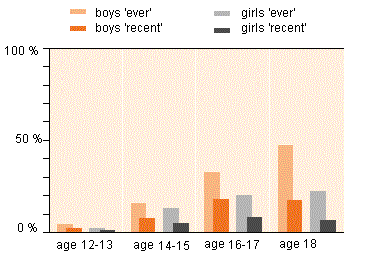
(Reference: Jeugd en riskant gedrag , Kuipers et al 1993) "Youth and risky behavior"
The increase in cannabis use among young people is often linked to coffee shops, but this is highly unlikely. Not only are coffee shops responsible for a mere one-third of the total distribution, but the increase in use also started well before the rise in the number of coffee shops, and coffee shops are not allowed to sell to school pupils. The main argument against this connection, however, is that soft drug use among young people is on the increase in a large number of (western) countries, and in some these more strongly than in the Netherlands, while these countries do not have coffee shops and often have a more repressive policy.
Between 2 and 5 per thousand cannabis users get into trouble. The number of registrations for problematic cannabis use in the out-patient facilities for addiction care was 2,456 in 1995, amounting to 5% of all registrations. Addiction clinics, psychiatric hospitals and general hospitals admitted a total of 237 people for cannabis addiction and 87 people for cannabis abuse without addiction in 1995. In line with increased use, there has been a rise in the number of requests for professional help over the years.

Nederweed
The yield and quality of Dutch-grown grass or Nederweed has improved greatly in recent years, due to more sophisticated cultivation techniques, such as climate control, crop improvement, cross-breeding and the cloning of female plants containing the highest percentage of active substance (tetra-hydro-cannabinol or THC). Various studies have shown that the percentages of THC in Nederweed can vary from 1.5% to 13% with peaks of up to 27%. Similar to many kinds of imported cannabis, some variations of Nederweed (‘Skunk’) may contain high concentrations of THC but this is not standard. In 1997, the Forensic Laboratory found an average THC level of 8.5% in Dutch cannabis and 6% in imported hemp.

Risks of cannabis use
In the Netherlands cannabis is smoked primarily in the form of hashish (resin mixed with parts of the hemp plant) or marijuana (dried tops of the hemp plant). Cannabis is also eaten (space-cake) and smoked using a waterpipe. The main risk of smoking is the damage to the lungs. There is no conclusive scientific evidence of harmful effects on the brain, blood circulation, immune system or fertility. However, studies have established a decrease in reaction speeds and the ability to concentrate, as well as a decline in short- term memory. These may have a negative effect on school performance, job performance and participation in traffic. Frequent use of cannabis can lead to psychoses in people with a certain predisposition. Consumption of ‘space-cake’ sometimes leads to an overdose with passing panic attacks. Consumption of Nederweed with a high percentage of THC may occasionally cause overreactions. Cannabis use is by no means risk free, but is certainly no more harmful than alcohol and tobacco use.

Prevention and education
Prevention, information and education play an important role in Dutch drug policy. The project ‘Healthy schools and stimulants’, specifically aimed at secondary school pupils, was launched in 1991. The project is a cooperative effort on the part of the Trimbos Institute, the out-patient facilities for addiction care and local public health services, together with local authorities. The project provides information on tobacco, alcohol, cannabis and gambling, aimed specifically at the ages at which students generally have their first contacts with the substance or in question or gambling. For cannabis this is usually around 15 years old. Besides providing information, the project is also aimed at establishing regulations (no substance use in schools), detection and guidance. By mid 1996, 30% of schools were implementing this project on a structural basis.
A specific consumer public is being advised on ‘sensible use’ in leaflets distributed in various coffee shops. ‘Tips on Hash and Grass’ warns against the harmful effects on concentration and the ability to react, the use of cannabis as a means of overcoming problems, eating space-cake, simultaneous use with alcohol or medication and taking hashish and grass out of the country.

Critism and Praise
The Dutch cannabis policy has been both praised and criticized nationally and internationally. In terms of social acceptability, the current policy is regularly under discussion, particularly with regard to drugs-related nuisance. The policy has also been criticized by EU countries, which regard the Netherlands as being out of tune, particularly regarding the harmonisation of legislation on narcotics. This has resulted in a tendency towards a more repressive approach. On the other hand, the Dutch cannabis policy has achieved the objective of a (relative) separation of the soft and hard drugs markets. The fact that cannabis is relatively easy to obtain in coffee shops has not resulted in a greater increase in use than in other countries. Furthermore, the number of hard drug addicts has stabilized and the Netherlands has few drugs-related deaths compared with other countries. In recent years, other countries have also come to reali ze that a certain decriminalization of soft drug use is worth considering in the context of public health, the prevention of social damage to users and the limitation of aggressive small-scale trade in the street. In addition to Switzerland and Denmark, a process aimed at the decriminalization of soft drug use has also been started in Germany, Great Britain and Spain. Daily reports in the newspapers indicate that such developments are in full swing at both a national and an international level.

Colofon
The fact sheet ‘Cannabis Policy, an update’ is part of a series of fact sheets published by the Trimbos Institute. This series consists of three fact sheets per year. Those published previously are:
1. Cannabis Policy
2. Hard drugs policy: Opiates
3. Hard drugs policy: XTC
4. Addiction Care and Assistance
5. Prevention & Education Alcohol and Drugs
6. Nuisance Policy
Fact sheets number 1 (Cannabis policy) and number 2 (Hard drugs policy: opiates) have been updated. See:
Fact Sheet 7 Cannabis policy Update
Fact Sheet 10 Hard drugs policy : Update opiates
Text: I.P. Spruit, M.W. van Laar, Addiction and Substance use, Trimbos Institute.
Copies in four languages can be ordered from the Trimbos Institute, Postbus 725, 3500 AS Utrecht. Telephone: +31 30 297 11 00. Fax: +31 30 297 11 11. E- mail: info@trimbos.nl
The fact sheets and other information can also be accessed on the Internet. Please consult the Trimbos home-page: http://www.trimbos.nl
The fact sheets are part of the Netherlands Alcohol and Drugs Report. For further information, please contact the Trimbos Institute, department Addiction and Substance use.
ISBN 90-5253-197-8
|

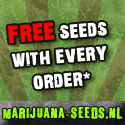

 Button Ads!
Button Ads! 